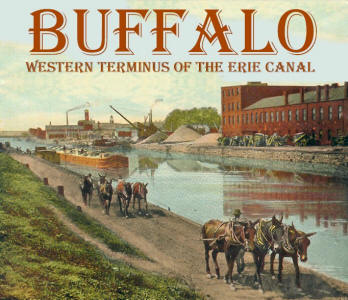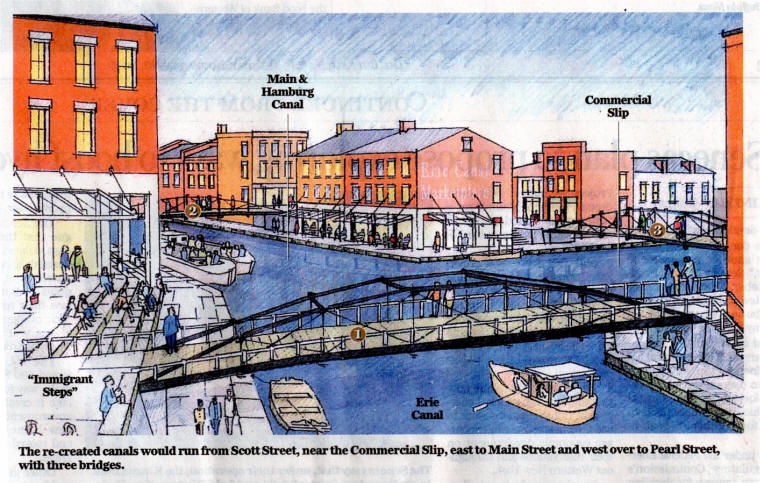Buffalo Erie Canal Visitors Center

Towards a
Buffalo Erie Canal Visitors Center

|
|
|
|||
|
Many paid to join, and their contributions helped fund the effort. The
same approach could be used to start a data base of Western pioneers who
passed through Buffalo on the Erie Canal. A nationwide
canvass of possible sources of Canal passenger information could be
initiated, with results funneled into the data base in the
Buffalo-Erie Canal Visitors Center.
At the bottom of this page is a link to a
sample search page for finding such information. |
||||
| After re-opening public comment following the elimination of the Bass Pro "big box" store from its plans, on November 29, 2010 the Erie Canal Harbor Development Corporation (ECHDC) announced that two elements of that plan, the parking ramp and the "faux" canals (with inappropriate, historically inaccurate artificial "falls" and "rapids") had been dropped. There will be no parking ramp, and instead of the "faux" canals, portions of the navigable canals to either side of the Commercial Slip will be re-established as in the sketch below, from The Buffalo News. | ||||
 |
||||
|
This is a major step in the right direction, accomplished as a result of
public activism. Hopefully, a Buffalo Erie Canal
Visitors Center will eventually be sited in the Canal District.
The 1825 plan is here rotated 90 degrees to allow comparison with the
later plan views below it. Note that today's Main Street
was Willink Avenue, Franklin was Tuscarora,
Pearl was Cayuga, and Erie Street was Vollenhoven
Avenue. Seneca, Swan and Eagle have
retained their names, but Stadnitski Avenue is now Church
Street. The later plans show the eventual Canal re-creation outlined in blue, first on an early 1900's map of the area, then on a view of current development, with the canals overlaid. The colored rectangles represent the 1920 location of homes of the Coniglio family and some of their friends. The red outline shows the boundaries of the area called 'The Five Points', another name for the old Canal District. Click on the maps to enlarge them. To see The Buffalo News' November 30, 2010 story on the canal re-creation, click HERE. |
||||
|
|
. |
|
. |
|
Other sites that
|
|
||
 |
|||
|
|
|||
|
Click HERE to seE a SAMPLE OF A POSSIBLE ERIE CANAL PASSENGER SEARCH SITE |
|
If you have
comments about this proposal, |
 Site Index |
|
Coniglio Home Page |